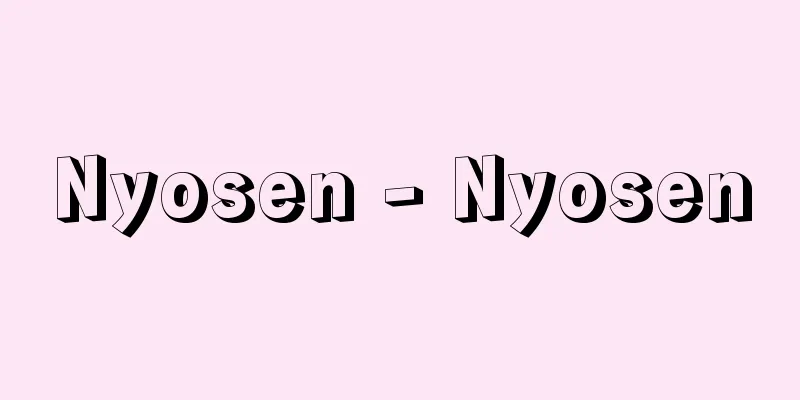Nyosen - Nyosen

|
1644-1715 (Shoho 1-Shotoku 5) A haiku poet from the early Edo period. His surname was Saito, and he was commonly known as Jinkichi. He was from Kyoto, and lived in Shinjuan, a house within the Shijo Dojo. He studied Teimon haiku under Umemori, but after attending Takamasa's "Haikai Tsune no Sugata" in 1679 (Enpo 7), he switched to Danrin haiku, competing with innovative people such as Shintoku and Tosei (Basho) to create a new style. During the Genroku period, he was also active as a judge of miscellaneous haiku, and was particularly talented in Chinese-Japanese haiku. His edited works include "Haikai Hashiradate" and "Matsubayashi." [Inui Hiroyuki] Source: Heibonsha World Encyclopedia, 2nd Edition Information |
|
1644‐1715(正保1‐正徳5) 江戸前期の俳人。姓は斎藤,通称は甚吉。京都の人で,四条道場内に真珠庵を結んで住んだ。梅盛に師事して貞門俳諧を学んだが,1679年(延宝7)高政の《俳諧中庸姿(つねのすがた)》に一座してからは談林俳諧に転じ,信徳,桃青(芭蕉)ら革新的な人びとと新風を競った。元禄期には雑俳の点者としても活躍,とくに漢和俳諧に才能を発揮した。編著に《俳諧柱立(はしらだて)》《松ばやし》等がある。【乾 裕幸】 出典 株式会社平凡社世界大百科事典 第2版について 情報 |
Recommend
orbital geophysical observatory
...Using the Explorer series, America not only ob...
Implications - Gan-i
〘noun〙① To include a certain meaning. Also, that m...
Teranaipura - Teranaipura (English spelling)
Former name of the city of Jambi in southeastern ...
Microphthalmia
A congenital eye abnormality that results in the e...
Meiji Shrine Outer Garden
This green space stretches from the northwestern ...
holocaust
In any case, an estimated 5.1 to 6.5 million peop...
Chiyokawa [Village] - Chiyokawa
A village in Yuki County, western Ibaraki Prefectu...
Gorytos (English spelling)
A case for bows and arrows used by the Scythians, ...
Stroheim - Erich von Stroheim
American film director and actor. Born September ...
up and under
…In addition, as a special rule in Japan, a sin-b...
javelin throw
…For the discus and hammer throws, a U-shaped fen...
The Amiens Judgment - The Amiens Judgment
…The result of this was the Provisions of Westmin...
United States Naval Academy - United States Naval Academy
...corresponds to the Military Academy. During th...
Wollaston prism
A polarizing prism that uses birefringence. It is ...
Paleoparadoxia
A genus of mammals that existed in the middle Mioc...

![Misono [village] - Misono](/upload/images/67ccf1c54f4e5.webp)







